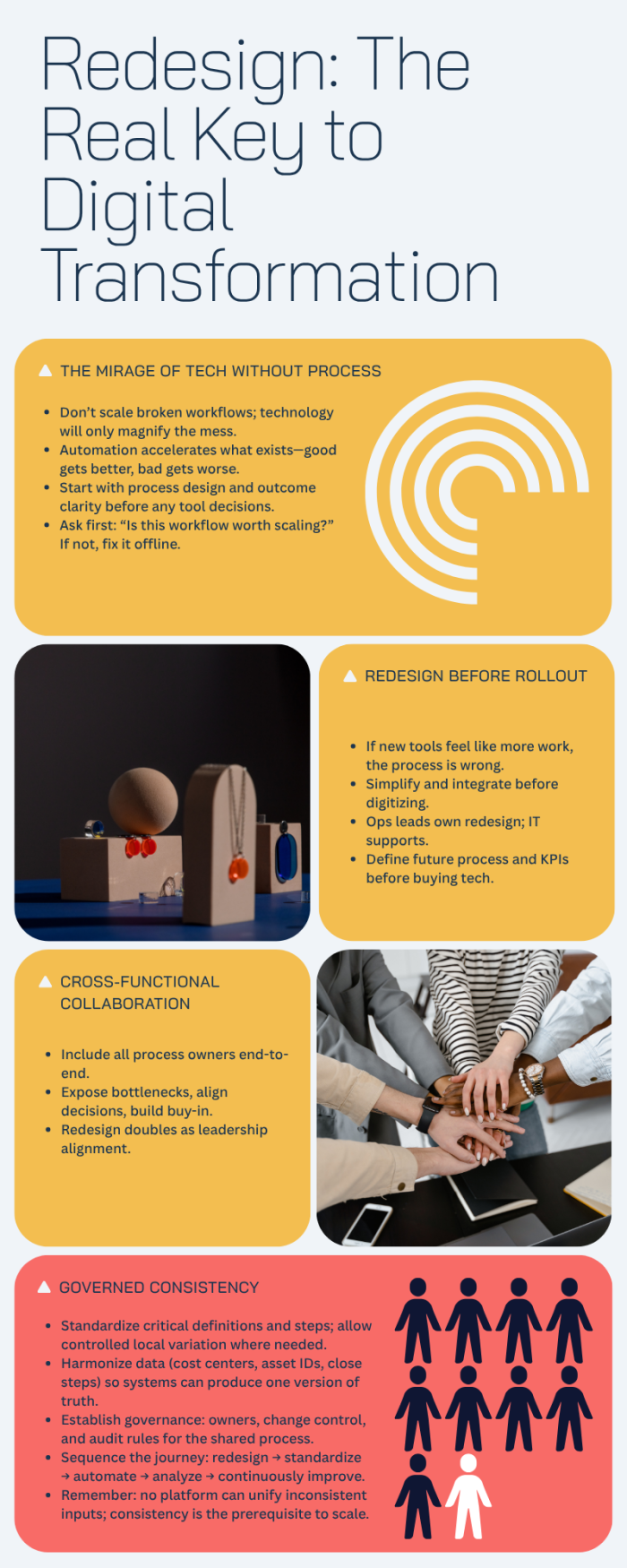You Can’t Digitize Your Way Out of Dysfunction
Many organizations rush into digital transformation by investing in tools—ERP, automation, mobile apps, dashboards—without pausing to ask the most important question: Are our processes worth scaling? In almost all industries including distribution and mining, layering technology over inefficient workflows only amplifies the chaos. Without process redesign, digital transformation becomes digital illusion.
Automation Multiplies Whatever You Feed It
If your maintenance planning is inconsistent, digitizing it won’t help. If your procurement approvals are fragmented, automating them won’t solve it. Technology doesn’t fix process—it accelerates it. If your underlying workflow is slow, error-prone, or ambiguous, automation will make it faster—but not better. Executives must understand that digital transformation starts with design, not deployment.
The Red Flag: When Tech Adoption Feels Like More Work
One sign of a flawed transformation is when frontline teams resist new systems—not because they dislike change, but because the new process adds friction. When legacy procedures are simply digitized—without simplification or integration—employees are forced to work harder to achieve the same result. Frustration grows, trust erodes, and the transformation loses credibility. Redesign before rollout.
Process Redesign Is Not an IT Project
Too often, business leaders hand off transformation to the IT department, assuming they’ll handle the workflows. But IT can’t redesign what it doesn’t own. Process redesign must be led by operational leaders—with support from finance, compliance, and IT—so that the result is both executable and scalable. Only then can the tech serve the process, not dictate it.

Cross-Functional Collaboration Is Non-Negotiable
Most critical workflows span functions: maintenance touches finance, procurement touches compliance, project management touches operations. Redesign must involve all process owners. This collaboration uncovers bottlenecks, misalignments, and blind spots—and creates buy-in. You’re not just mapping tasks; you’re redefining how the business flows. Done right, cross-functional collaboration becomes a leadership alignment exercise.
Standardization Enables Transformation
In multi-entity businesses, inconsistent processes are the enemy of scale. If every site closes books differently, manages assets on separate spreadsheets, or defines cost centers uniquely, no system can deliver unified insights. Redesign enables standardization, which enables automation, which enables analytics. You don’t need uniformity—you need governed consistency. That’s where transformation begins.
Design the Future Before You Build the System
Before you sign off on a technology implementation, ask: Have we reimagined the process? Have we simplified it? Have we aligned it across the business? Do our KPIs reinforce the new model? Digital transformation should not be a copy-paste of the old world. It should be the creation of a better one. And that creation begins with process.
